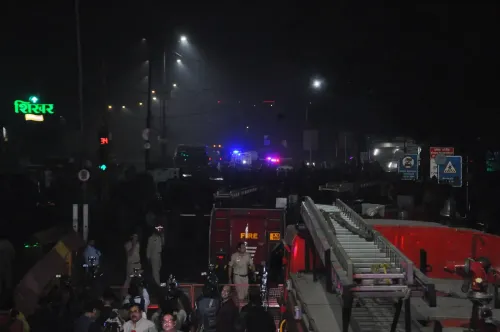Are Jaish-e-Mohammad and Al-Qaeda Coordinating Efforts in Kashmir?

Synopsis
Key Takeaways
- Collaboration between Jaish-e-Mohammad and AGH signals a resurgence of terror activities.
- Significant arrests highlight ongoing threats in Jammu and Kashmir.
- Security agencies successfully intercepted a major terror module.
- ISI aims to unify terror factions for enhanced operational strength.
- Continued vigilance is essential for national security.
New Delhi, Nov 10 (NationPress) Two physicians from Kashmir were apprehended in Faridabad (Haryana) and Saharanpur (Uttar Pradesh) for their affiliations with Jaish-e-Mohammad and Ansar Ghazwatul Hind (AGH). The AGH, linked to Al-Qaeda, indicates a significant collaboration with Jaish-e-Mohammad within India.
Although the AGH had been active in Jammu and Kashmir, it was effectively dismantled. The recent arrests signal a possible revival of the AGH as it seeks to reestablish its presence alongside Jaish-e-Mohammad.
Since Operation Sindoor, organizations like Lashkar-e-Tayiba, Hizbul Mujahideen, and Jaish-e-Mohammad have endured considerable setbacks. These groups are now striving to regain their foothold. Numerous infiltration attempts have been thwarted by security forces.
Launched by Al-Qaeda for operations tailored to Jammu and Kashmir, the AGH struggled to achieve significant success. In 2019, authorities declared its complete eradication. However, it appears to be making a concerted effort to return and concentrate on Jammu and Kashmir, activating operatives within India.
The ISI appears to be banking on the revival of terror activities in the Valley by reactivating modules within India. The recent bust of this module in UP and Haryana is a significant triumph in counter-terrorism efforts, with authorities confiscating 3,000 kilograms of explosives, various chemicals, electronic circuits, and arms.
Officials assert that the collaboration between Jaish-e-Mohammad and AGH aims to orchestrate terrorist activities in Jammu and Kashmir.
Post-Operation Sindoor, the ISI has been advocating for a united front among terror factions. In Bangladesh, the ISI has urged groups to operate cohesively to enhance their strength.
After Operation Sindoor, the ISI has sought to sideline the Resistance Front while attempting, albeit unsuccessfully, to revive Hizbul Mujahideen. The AGH, focusing on India-centric operations, has a base of local recruits, facilitating the ISI's strategy to establish a homegrown terror group in Jammu and Kashmir.
The AGH, with its local operatives, aligns with the ISI's objectives. While the intention was to create localized groups in Jammu and Kashmir, the plans also encompass orchestrating attacks across North India. The operational methods employed by this module suggest substantial funding.
Additionally, the operatives communicated solely through encrypted channels and maintained contact with handlers in Pakistan for directives. Funding was reportedly gathered through charitable contributions to evade detection.
Investigations into this module are ongoing, with authorities indicating that the operatives have support from individuals across various regions in Kashmir. Raids have been conducted in Srinagar, Anantnag, Ganderbal, and Shopian.
Officials from the Intelligence Bureau emphasize that as infiltration becomes increasingly challenging for terrorists, the ISI is utilizing every available resource within India. Their broader aim is to dispatch these operatives to Jammu and Kashmir to execute major terror attacks.
The substantial cache discovered indicates the ISI's intentions to significantly undermine peace in Jammu and Kashmir, according to an official statement.









